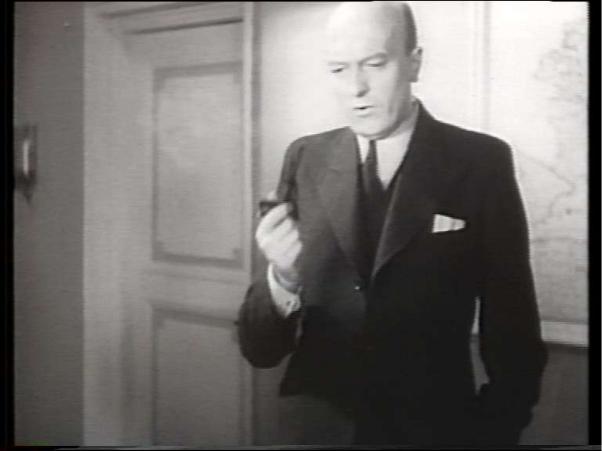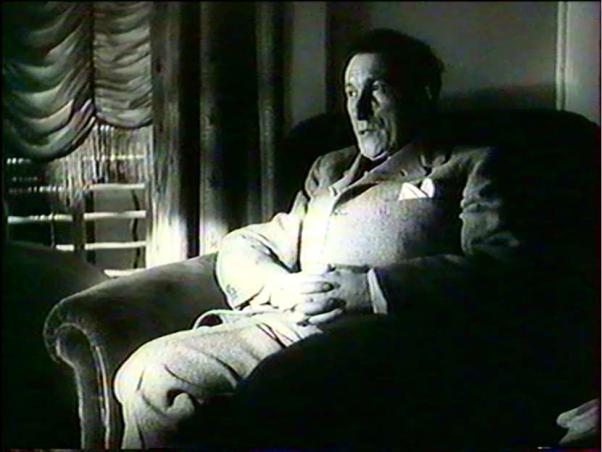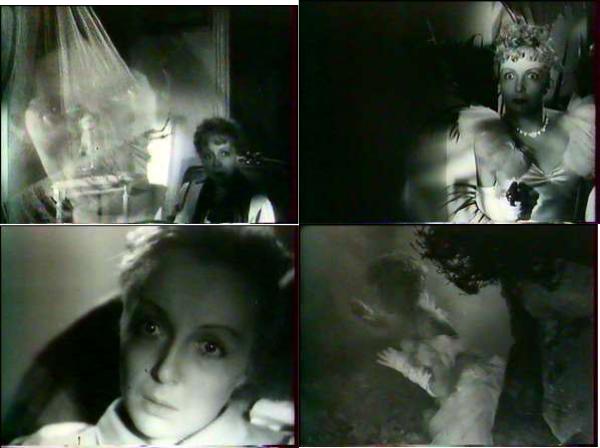
WilliamsT
.pdfTuschinski Theatre in Amsterdam. The project was to be Komedie om Geld/The Trouble With Money (Max Ophüls, 1936), a light hearted comedy about the problems created in society by a strong desire for money. Shooting for the film began in mid-June, 1936, with a budget of 150,000 guilders, making it at the time the most expensive film ever to be made by the Netherlands (Beusekom, 2004: 61).
Besides Ophüls and Schüfftan, the rest of the crew and cast were comprised of local Dutch talent, a problem which proved difficult for Ophüls, for as Beusekom (2004: 65) has noted, he 'complained that making films in the Netherlands took him much longer than in France, due to the primitive working conditions and poor technical equipment available.' Such conditions would have greatly impacted upon Schüfftan's quality of work, affecting both his lighting and his camerawork. However, this would not be the last time that Schüfftan would be forced to adapt to smaller budgets and studios. Work on Komedie om Geld was unlikely to have been a pleasurable experience for Schüfftan, who as Ophüls' only friend and compatriot on set would have been compromised by the director’s repeated clashes with producer and financier Will Tuschinski, and his failure to integrate himself into the working practices of the small Dutch studio (Beusekom, 2004: 65). This is evident in the film, with Ophüls’ and Schüfftan’s struggle with the Netherlands industry manifesting itself in rather poor photography, particularly in comparison with the pair’s other collaborations. One such example is Schüfftan’s seemingly hurried lighting positions. His usual strong backlight is less in evidence, favouring instead a simple strong fill light, which offers little of the definition or interest of Schüfftan’s usual photography (see Figure 25).
111

Figure 25: Komedie om Geld.
Filming on Komedie om Geld was completed by the beginning of September. Ophüls returned to France to finish La Tendre ennemie, and Schüfftan also travelled to France for his next film projects, despite the Netherlands’s rather favourable attitude towards Jewish and political exiles (Palmier, 2006: 144). Both left behind the most highly anticipated film in the Netherlands film industry to disappear as a commercial failure, only a week after its triumphant release (Beusekom, 2004: 66).
Schüfftan's first film project following his return to France was Mademoiselle Docteur
(1936), a collaboration with G. W. Pabst, the director of Du Haut en bas, one of Schüfftan's earliest films in France. The film is also known as Salonique nid d’espions/Spies from Salonika, and was also released as an English language version Under Secret Orders, under
112
the direction of Edmond T. Gréville. It is a spy drama which centres upon a female doctor who falls in love with one of her patients, a German Intelligence spy working from Salonika, Greece. As with Schüfftan's more recent efforts, Mademoiselle Docteur demonstrates a slowly developing Expressionist aesthetic influence, particularly through Schüfftan's chiaroscuro lighting. In publicity for Mademoiselle Docteur in 1937, Schüfftan went some way to explaining his working process:
I did my composition not only with the actor and the movement and the set; for me the value for composition is the light. Because the light must be at the point where the action is, so that the spectator knows where the action is. One picture changes to the next terribly quickly, so you have to be precise... when you look at a Rembrandt picture, mostly the light is not directly centered on the action; only in the neighborhood of the action. The action sort of continues the light. That’s what Pabst likes very much, and I always tried to do it for him. Immediately when he saw the first rushes he saw that what he wanted had come out. Lighting is the main thing. (In: Leyda, 1977: 419-420)
This quote once again emphasizes the painterly aspect of Schüfftan’s work, whereby similarities to the Expressionist style can be traced not from the movement of German cinema, but from Schüfftan’s artistic references, most notably Rembrandt. The technique of lighting described by Schüfftan is certainly evident in Mademoiselle Docteur. The lighting is notably directional, with a spotlight often cutting across the set and sometimes the body of the subject. In accordance with the method outlined by Schüfftan above, rather than providing a direct facial illumination, this technique allows for a gentle illumination of the face, allowing for a number of shadows to be cast across it. This creates a sense of intrigue around the characters fitting to the theme of the film. Through such a technique, Schüfftan, as suggested above, avoids making the faces of the subjects the brightest aspect of the frame, creating interest and depth in the image. This is evident in Figure 26, for which Schüfftan
113

casts his spotlight onto the body of the subject and the background set, allowing the face to be more gently illuminated. Furthermore, a light source from behind the window at the rear of the frame creates a sense of depth in the image. The strong use of spotlighting in the film also occasionally results in full body shadows cast along the walls of the set, a tendency which does recall Expressionism.
Figure 26: Schüfftan avoids casting his spotlight directly onto faces in Mademoiselle Docteur.
Certain lighting techniques used with regard to the face of the film's star, Dita Parlo, who plays the Mademoiselle Docteur, merit discussion. As might be expected, Schüfftan privileges the face of the female protagonist, with a stronger use of key lighting used than on other subjects, and with filler lights used to reduce shadow on her face. To augment Parlo's particular features, Schüfftan lights her mainly from above, with a focus around her eyes.
114
This functions to lower her cheekbones, thus enlarging the space around her eyes, making them appear larger and giving them prominence. This technique is combined with filler lights from below which reduce the possibility of any shadow, and functions alongside Pabst's choice to frame Parlo from above with great effect. Such a technique is used to startling effect in one particular scene, in which the camera pans back from a close-up on Parlo's face, her eyes lit as described above (see Figure 27a). Once the camera has panned back she is reduced to the bottom right of the frame, with the left hand side filled with the curtains which have billowed into the room. The menacing face of Monsieur Leo then appears superimposed in close-up over this billowing curtain, staring directly into the camera lens. He is lit similarly from above but from a much higher angle, which combined with a lack of filler light allows dark shadows to be cast across his furrowed brow and over his eyes, highlighting his role as a malignant threat in the film.
Such an approach to lighting Parlo's face continues throughout the film, in fact creating its own meta-narrative, beginning from the shot described above where a sense of innocence is created through this method of lighting her eyes. The next stage in this meta-narrative occurs in the latter parts of the film, when she escapes during the raid. Schüfftan employs the same lighting effect. However, combined with Parlo's performance and the efforts of other elements such as the score, this time her eyes make her appear maniacal, desperate to escape (see Figure 27b). Her bright white dress is also strongly illuminated by Schüfftan's lighting, enhancing the effect of fragility upon her character. Later, in her final escape from the crash site her face is in almost complete darkness, a stark contrast to the bright illumination of earlier scenes (see Figure 27c). Finally, the denouement to this meta-narrative of lighting techniques occurs at the very end of the film when the doctor is found to be in a mental institution (see Figure 27d). Now when she is filmed in close-up Schüfftan targets no light at her eyes, instead directing a spotlight at only the bottom half of her face. However, in the
115

darkness we can still see, through the gentle luminosity created by the spotlight, her wide eyes looking upwards, communicating not innocence or desperation, but emptiness and insanity.
Figure 27: Dita Parlow in Mademoiselle Docteur. Clockwise from top left: Figures 27 a, b, c and d.
So, it is with Schüfftan's own words in mind, alongside examination of films from this period such as Mademoiselle Docteur and The Robber Symphony, that we can begin to define a distinct Schüfftan style, albeit tailored to the specific subject matter of a given film. This developing style often bears the mark of Expressionism, though one which Schüfftan developed from his own study of painting and sculpture, rather than any direct training as part of German Expressionist cinema. It seems this arose because directors expected them from Schüfftan. As far as they were concerned, given his status as a former Ufa employee, he must be well-versed in Expressionist techniques. Even though this was not entirely the case,
116
Schüfftan, a struggling exile, had to adapt to their expectations if he was to survive. It was a labelling, if you will. It is as if, as a cinematographer hailing from Weimar Germany, Expressionist aesthetics were expected of Schüfftan in exile, and he was therefore forced to adopt them. Furthermore, we can see how the oversimplification of Schüfftan’s style in the writings that exist upon his films, through such shorthand as chiaroscuro and Expressionist, is an extension of the assumption made by the directors and producers who hired Schüfftan during this crucial point of transition in his style, away from realism, during the 1930s.
This developing style, dating for Schüfftan from the mid-1930s, can be said to constitute a fondness for chiaroscuro lighting (of the Rembrandt model), a strong use of backlighting to separate subjects from the background set, and a determination not to floodlight a subject's face. Key lights were rather directed towards the background set, to create interest in the set and image by ensuring that this is where the brightest part of the frame is located. In terms of facial lighting, the Rembrandt effect is favoured by Schüfftan, except perhaps for female (in most cases) stars, where traditional soft focus glamour lighting is employed. More generally, these techniques can be viewed as an interest in creating a sense of depth, ensuring that light is used wherever possible to combat the two-dimensionality of the film image, and to create a sense of texture in the image that can be associated with a painterly style.
Schüfftan's final film of 1936 saw him once again leaving France, this time traveling to Spain for a Ulargui Films production María de la O, with direction by Francisco Elias. Such a diverse set of national projects in such a short period of time since Schüfftan had first arrived in France reveals Schüfftan's desperation for steady work, and that he had yet to be entirely absorbed into the French industry, still relying on his émigré compatriots when working in France. For whilst continual employment is a struggle for any cinematographer, an émigré status certainly complicates the matter. María de la O in fact deals in its narrative with
117

national identities, telling the story of an American artist's return to Spain where he had resided during his youth. When in Spain the artist befriends a young gypsy girl, whom he discovers to be his daughter. To save her from the destitution of her life, the artist buys his daughter from her gypsy tribe, taking her back to America with him to build a new life. He soon realises, however, that his daughter's home is with her tribe in Spain, where she has been brought up. The film, which is rarely available, is little remembered besides the dancing of Carmen Amaya, who would, shortly after María de la O, move to America and cause something of a sensation with her flamenco skills (see Figure 28).
Figure 28: Carmen Amaya in María de la O.
Spain was enduring its own disturbing political situation which meant few exiles paused here to establish their new lives, although it was the path for many on route to America. Had
118

Schüfftan left Europe at this juncture he may well have fared better in Hollywood. Instead he returned to France, where many of his greatest successes were yet to come. His first project upon his return was another collaboration with Max Ophüls, Yoshiwara, which began production in February 1937.15 The appeal of the film to audiences, as with Die Herrin von Atlantis and Mademoiselle Docteur before it, was to be the exotic location of the film, being based around a house of Geishas in Japan at the turn of the century (even though, unlike Die Herrin von Atlantis, this faraway location was recreated entirely in the studio). The film deals with a Russian naval officer, Serge (Pierre Richard-Willm), and his love of a Geisha, Kohana (Michiko Tanaka), which is complicated by the jealousy of Ysamo (played by the legendary star of the silent screen, Sessue Hayakawa). Ysamo is an old friend of Kohana who had doted upon her before she became a geisha. The love between officer and geisha ends in tragedy when Serge entrusts Kohana with some vital documents after he has been wounded. Kohana is arrested carrying those documents and she is sentenced to death. Learning of Kohana's fate Serge rushes back to save her, but dies of his own wounds before he can stop the firing squad.
Schüfftan's approach to lighting in the early parts of the film is to support the set in its recreation of a Japanese location. A highly-lit space is created with little contrast or shadow in both interior and exterior scenes, which functions to recreate the brightness of the Japanese sun. Schüfftan creates such an effect through the strong use of key, side and fill lights, with little to no back or hard light used. This creates a general illumination of the set with little contrast, but also without the depth or interest of image for which Schüfftan was becoming known. This technique functions not only for the exterior scenes set in sunny Japan, but also largely for within the houses, whereby outdoor light softly illuminates the area through the fragile doors which encompass the set. As we know that Schüfftan has turned to painting and
15 The title of the film refers to the famous geisha district of Edo (now Tokyo).
119
sculpture for influence, it possible that this light palette for Yoshiwara was inspired by the classic Ukiyo-e genre of Japanese woodblock printing, which are characterized by a similarly soft hue, and which provide suitable lighting tones for the romantic elements of the narrative.
A more mundane explanation to this approach to lighting, lacking the contrast and specific lighting points, which we have seen associated with Schüfftan's style, could be to accommodate Ophüls's own working practices and particular style. Ophüls is known for his sweeping movements of the camera, for which he is best remembered in his later works, particularly those in collaboration with the cinematographer Christian Matras (Crisp, 1997: 396-397). However, such movements are also invariably seen in Yoshiwara. One such example occurs when the camera follows Serge as he rushes up the staircase of the Geisha house and along the corridor, before barging into a room on the sound of Kohana's screams, in order to save her from attack by another Russian crewman. To achieve such rapid and varied camera movements would require careful orchestration of the light movements, and so a general illumination of the set would reduce this complication. In this sense it could be said that Ophüls demonstrates a greater concern for the set design and the camera's ability to move around it, than with the cinematographer's ability to light the set. However, this does not detract from the fact that this flat-lighting has a narrative effect.
One scene which perfectly illustrates this, and which has proven to be of particular interest to critics, occurs when Serge describes what their life would be like if she were to return to Russia with him. Serge's descriptions are realised for Kohana in a vivid fantasy shared between the two lovers, transforming the set into a carriage ride through Europe, a sled ride, an evening at the opera, and dinner at a fine restaurant. Alexander Jacoby (2002) describes how the set design in this sequence functions to undermine the fantasy of the couple, and in fact reinforces the stark reality of their relationship:
120
